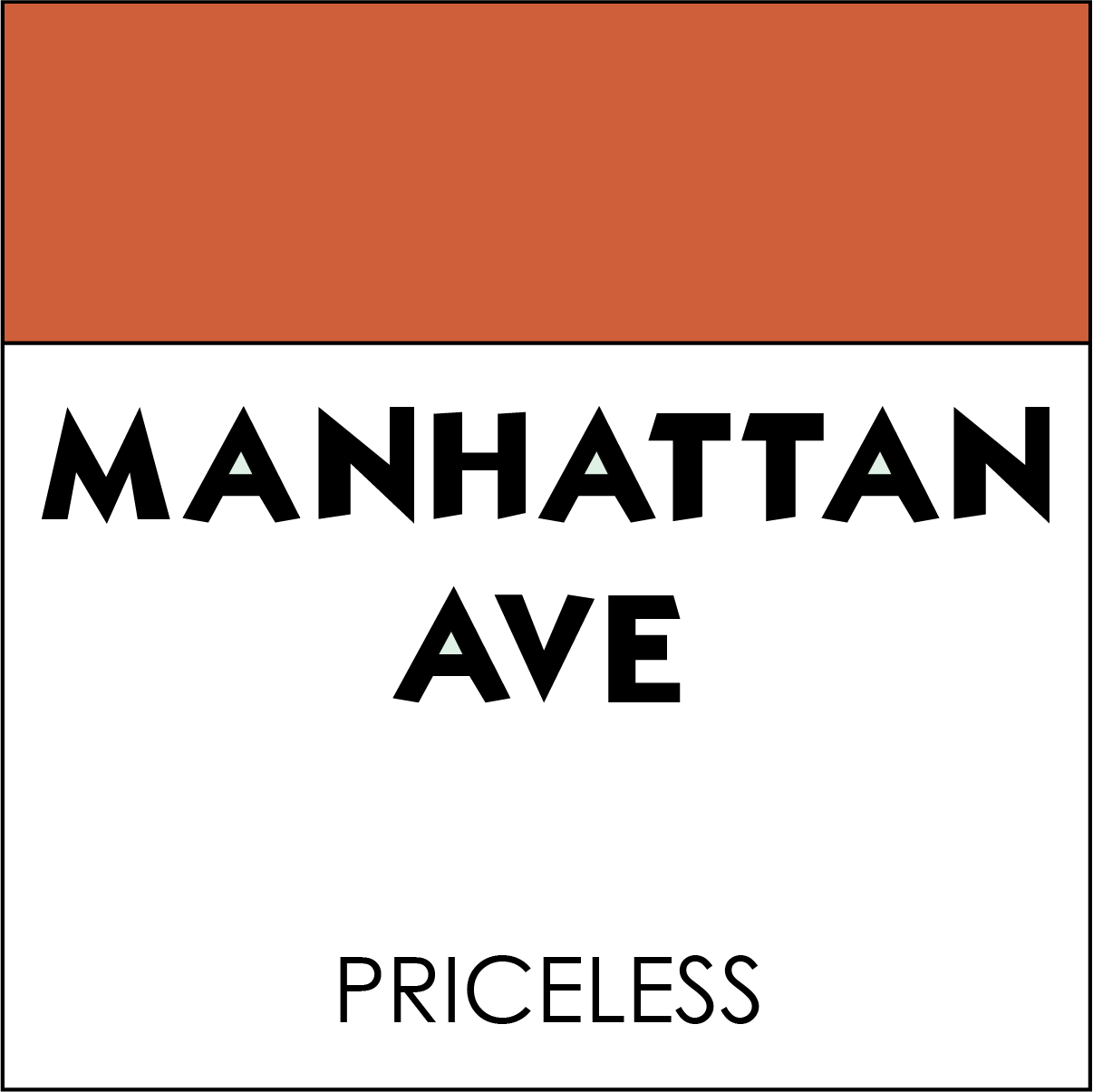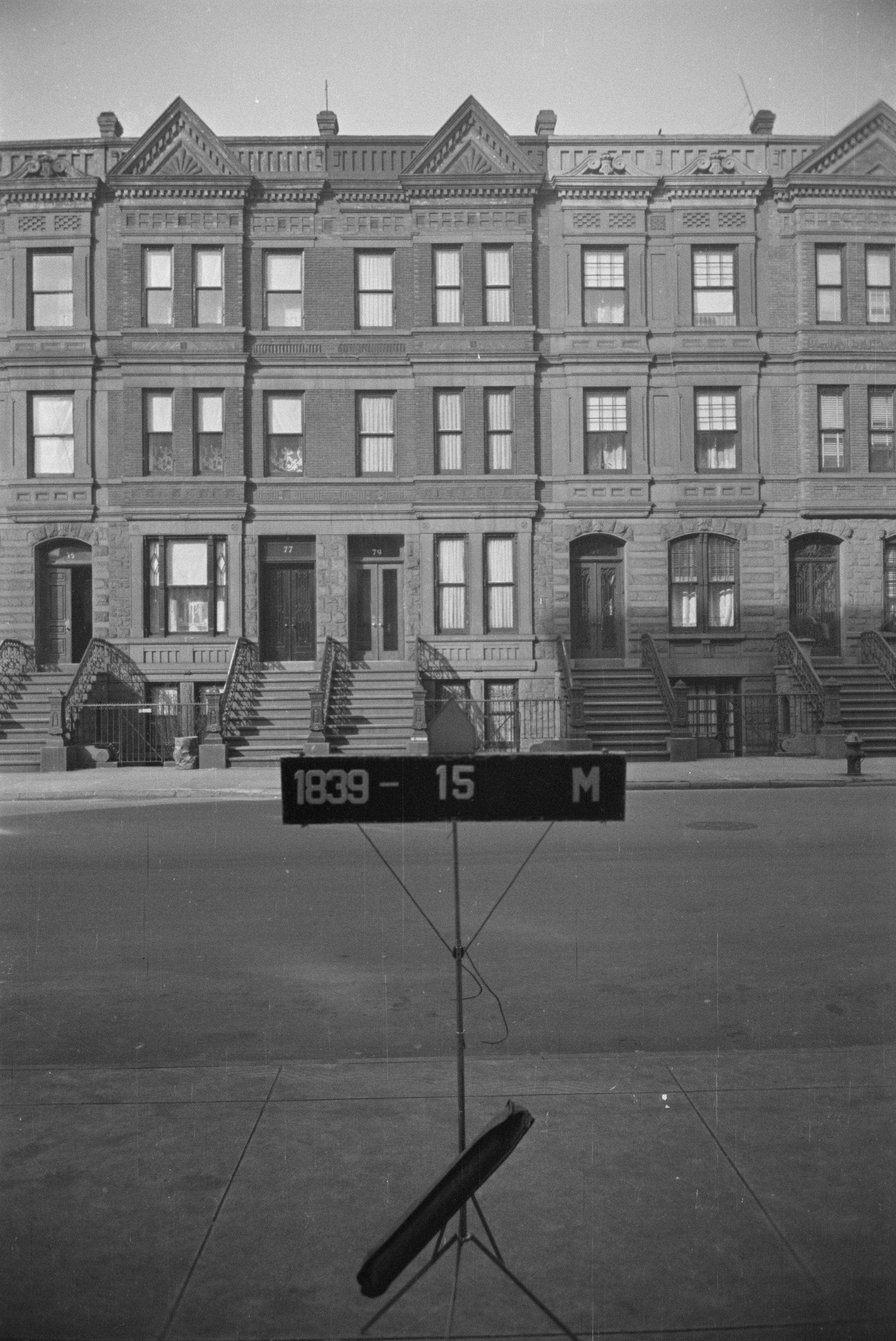
77 + 79 Manhattan Ave.
by Tom Miller
In October 1890, real estate developer William J. Davenport purchased land at the southwest corner of Manhattan Avenue and 104th Street. The following year he completed construction of six three-story-and-basement homes on the site, stretching from 73 to 83 Manhattan Avenue. The Queen Anne-style residences were designed by architect William Howe in a balanced A-B-C-C-B-A configuration.
The middle pair were designed as near mirror-images of one another—the only difference being the parlor fenestration—a tripartite window at 77 Manhattan Avenue and a pair of openings next door. The basement and parlor levels were clad in undressed brownstone, while the upper two floors were faced in red brick. Atop the cornices were sharp gables with sunbursts and paneled parapets.
The original residents were the Stewart family at 77 Manhattan Avenue, and civic engineer R. C. Hanson at No. 79. Neither family would remain especially long. In 1899, the Stewarts sold 77 Manhattan Avenue to dentist Martin Degenhart and his wife, Laura. And by 1903, 79 Manhattan Avenue was being operated as a boarding house, home to tenants like May B. B. Weiss, who taught in the primary department of Public School 94 while living here that year.
Martin Degenhart and his wife bred Boston Terriers.
In June 1908, Dr. Degenhart lost his “gentleman’s sack coat,” as described in his ad in the “Lost and Found” column of The New York Times. He was most concerned about retrieving his watch. The ad said the coat contained:
Watch and chain, commutation ticket, &c.; finder may retain money found in wallet as reward; watch a keepsake from mother.
In addition to his dental practice, Martin Degenhart and his wife bred Boston Terriers. The American Kennel Club Stud Book noted that their stud Fiffy III was born on January 20, 1908. The couple left 79 Manhattan Avenue in 1915, renting it to Ellen Stewart.
In the meantime, the boarders next door, like May B. B. Weiss, were respectable and professional. Mary Lilley, a widow, lived here with her daughter and son-in-law, Frank O’Donnell in 1911. All three were listed in Dau’s New York Social Blue Book that year. And the following year, James Beekman Docharty and his wife, Margaret L., boarded here. Docharty had been Secretary of the New York State Agricultural Society at the turn of the century.
In 1915, Arthur Rose rented 79 Manhattan Avenue. A professional organist, he was a member of the American Guild of Organist. In 1910, he was among the organizers who merged the Central Baptist Church and the West Park Baptist Church at 92nd Street and Amsterdam Avenue.
Sharing the house was a relative, chemist Anton Richard Rose, and his wife, the former Mary Davies Swartz. Richard and Mary met at Yale where Mary was working on her Ph.D. In 1916, Mary published her first book, Everyday Foods in War Time, a pioneering work on nutritional science. Her later works include Feeding the Family, Foundations of Nutrition, Laboratory Handbook for Dietetics and Teaching Nutrition to Boys and Girls. She would be appointed to the League of Nations Health Committee in 1935.
Richard and Mary Rose left around 1918, when the Julius Kahn family moved in with Arthur Rose. Julius was a silver merchant. In 1919, he incorporated Friedelson & Co., Inc. a silverware firm, with two partners. When the Kahns moved into the Rose house, Milton Kahn was serving with the U.S. Army in Europe. Following his service, on December 21, 1918, his position-wanted advertisement appeared in the New-York Tribune read: “Young Man, 23, honorably discharged from army, desires position in foreign department of bank or commission house. M. K. 79 Manhattan Ave.”
Arthur Rose…was among the organizers who merged the Central Baptist Church and the West Park Baptist Church
After renting 79 Manhattan Avenue for five years, Arthur Rose purchased it in May 1920. He would remain in the house for years.
By then, 77 Manhattan Avenue had been converted to the A. C. M. Y. Music and Business Studio. An advertisement in The New York Times on February 28, 1922, read, “We teach piano, voice, violin, cello; bookkeeping, Spanish, English. Special attention to beginners. Progress guaranteed.”
Although the two houses were well maintained at the turn of the century, they were in the crosshairs of an ambitious urban renewal project. The New York Planning Commission approved a low-rent housing project on February 7, 1952, that would wipe out everything from 100th to 104th Street, from Manhattan Avenue to Amsterdam Avenue. Shortly thereafter, William Howe’s picturesque grouping, including 77 and 79 Manhattan Avenue, was destroyed.
Tom Miller is a social historian and blogger at daytoninmanhattan.blogspot.com




